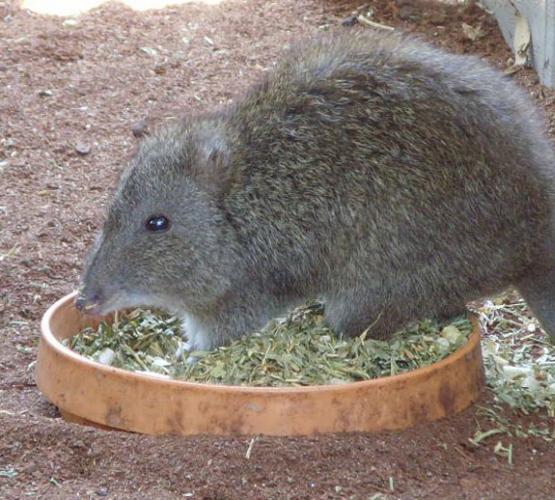- +61 8 9248 1984
-
WHITEMAN
31.3℃

Potorous tridactylus
Least Concern
7 Years
1 - 1.4 Kilograms
Potoroos feed on vegetation, including fungi, tubers, seeds and small insects.
They are found with a patchy distribution from South-eastern Queensland to South-western Victoria. They are also found throughout Tasmania where they are considered common. They inhabit wet and dry sclerophyll forests, coastal heath and rain-forest fringe
The Long-nosed Potoroo is a member of the superfamily Macropodoidea which includes Bettongs, Potoroos, Kangaroos and all species of Wallaby. The subfamily Potoroinae includes the smaller members, including four species of Potoroo (1 of which is extinct). They are found with a patchy distribution from South-eastern Queensland to South-western Victoria. They are also found throughout Tasmania where they are considered common. Similar to the larger macropods, the Long-nosed Potoroo’s pouch contains four teats, though it only has one joey at a time. Gestation is approx 5 weeks. The duration of pouch life is only 4 months with young reaching sexual maturity at 12 months.